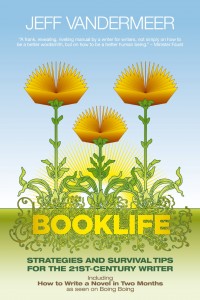Here’s the third mini-interview on collaboration. This series celebrates collaborative creativity in honor of the Shared Worlds summer camp, which challenges teenagers to build and share imaginary worlds.
Whether writing together or alone, Kathleen O’Neal Gear and W. Michael Gear tell great big stories of native North Americans, of adventure and romance, and of rich characters and compelling situations. And they do so with seemingly unerring historical accuracy.
Before writing full-time, Kathleen O’Neal Gear served as the State Historian of Wyoming and as the Archaeologist for Wyoming. Since the mid-1980s she has written numerous novels alone and dozens with W. Michael Gear.
Also a trained anthropologist, W. Michael Gear worked as a field archaeologist in the 1970s and 1980s. He sold his first novel in 1987 and has since written more than a dozen alone and even more with Kathleen O’Neal Gear.
There most recent novels are Children of the Dawnland, a young adult novel, and The Coming of the Storm, which is the first in the Contact: The Battle for America series.
Below, the Gears share some advice on how to work well as a writing team.
*
Jones: What are the benefits of collaboration?
Kathleen O’Neal Gear: Having two imaginations weaving the same story can create magic, and that’s the primary benefit of collaboration. When everything is flowing, there’s a tangible energy you just don’t get when you write alone.
W. Michael Gear: Having Kathleen evaluate everything I write helps keep perspective on the novel. There have been times I was so profound I just knew what I’d written was going to rock the Pulitzer committee back on its heels and redefine Western literature. Kathy, of course, returned the draft all marked up in red with a note saying: “This is real fecal material.” Though, she used a much shorter noun of Anglo-Saxon derivation. That fact is if I was so brilliant that I lost her, I’d lose the reader, too. Time to rewrite for clarity.
Jones: How do you do it?
Kathleen O’Neal Gear: We discuss plot every morning over breakfast. What are the characters doing today? What’s the major obstacle each person will face? What’s the goal for this chapter? At night, we read each other’s work, make suggestions, then the other takes over and starts rewriting. We end up handing the manuscript back and forth until we’re both happy with it.
W. Michael Gear: While the above sounds technically correct, I tell the reader that all the parts they liked were written by Kathy. Anything they thought was clunky, ponderous, or dull was my contribution.
Beyond the storytelling, each novel is a serious attempt to educate the American people that they have a stunning fifteen-thousand year cultural heritage. Right here. On our continent. We argue about which archaeological data should be included and the best way to interpret our nation’s cultural heritage. Many of the novels are used as texts, or supplemental texts, in university courses, so we have to be right.
Jones: When does collaboration work? How does it positively affect the final product?
Kathleen O’Neal Gear: It works especially well for character creation. Since we’re a male-female team, our characters undergo an interesting process of definition. Each becomes a blend of masculine and feminine traits that, we think, results in a more realistic character. Every woman, after all, has a male side, and every man has a female side. That’s what makes people interesting.
W. Michael Gear: A writer is always so close to his material that all he can see are the trees in front of him–and they look just fine. Having co-author forces him to step back and really look at the forest. That’s when the bare spots become visible and the densely worded thickets can be thinned. We want the reader to fall seamlessly into our characters’ world and become so engrossed they don’t come out until the final page.
Jones: Can you share some advice (and maybe words of caution) for fiction writers setting out to collaborate?
Kathleen O’Neal Gear: If you’re a couple, beware. True collaboration requires that you give up your ego. You have to trust your partner’s talent. If he or she says there’s something wrong with the story, then there is. Fix it.
W. Michael Gear: This is a bigger subject than we have space for here. Most collaborations get in trouble when one party isn’t perceived as doing his share of the work. Work out in advance who does what, and by when. Put it in writing, and pay particular attention to the contract. Co-authoring a book is a business agreement. Treat it like one. Anticipate everything: illness, death, divorce, responsibilities for promotion, pay-out, agencies, responsibilities for revisions, who has editorial contact, how to handle legal disputes–and a hundred other details. Relying on a co-author’s good will and verbal assurances only ends up making lawyers rich.
*
Jeremy L. C. Jones is a freelance writer, editor, and part-time professor. Jones is a frequent contributor to Clarkesworld Magazine. He is also the director of Shared Worlds, a creative writing and world-building camp for teenagers that he and Jeff VanderMeer designed in 2006.
